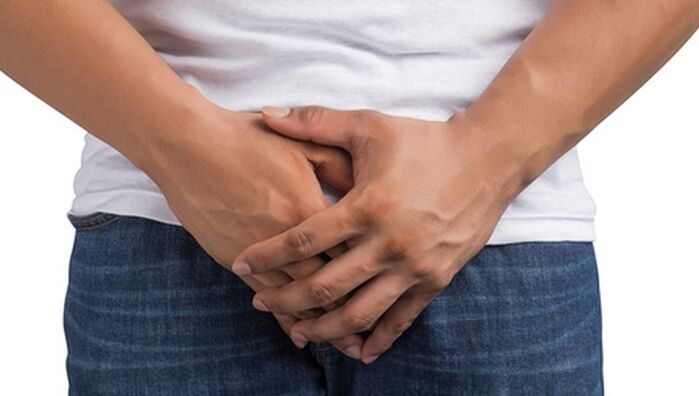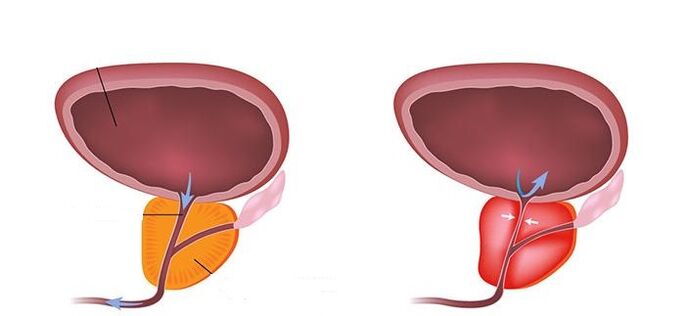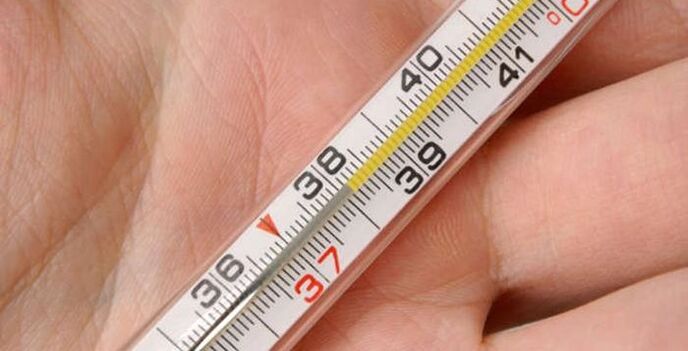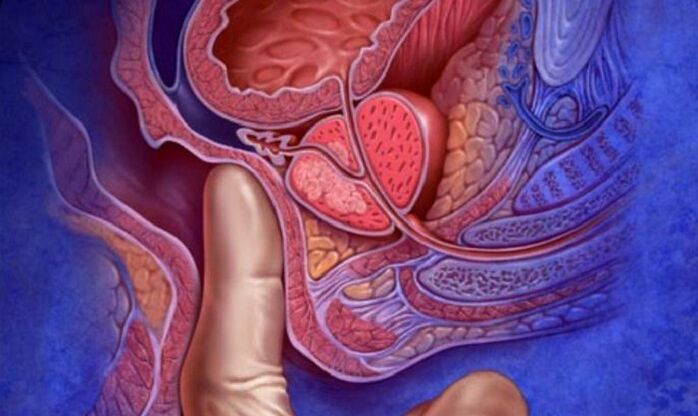According to statistics, every third able-bodied man suffers from prostatitis at different stages of life. Persistent pain, impotence, infertility - this is not a complete list of problems that threaten patients in the absence of treatment. Due to the high urgency and danger of the disease, the symptoms and initial manifestations should be known to every man. In this article you will learn all the symptoms and diagnostic methods that allow you to recognize prostatitis.

Clinical picture in the early stages of development
Prostatitis is an inflammatory lesion of the male prostate gland. The following forms of the disease are distinguished: acute and chronic bacterial prostatitis, chronic pelvic pain syndrome, asymptomatic prostatitis. Each form manifests itself differently, has the characteristic features and characteristics of the course.
It is difficult to say how the disease will continue in every man. The presence of certain signs depends on a number of external and internal factors. To characterize the pathology, it is common to divide all the symptoms of prostatitis into 3 major groups: urinary excretion, sexual dysfunction, those associated with mental problems. The first and most important symptoms of prostatitis (except for the asymptomatic form) in a man may be the following symptoms:
- Pain in the pelvis, back, groin.
- Pain and burning during urination.
- Difficulty urinating.
- Incomplete emptying of the bladder and a wrong feeling to urinate.

Pain in the pelvis, lower back, groin, feeling of incomplete emptying of the bladder and a false desire to urinate are signs of prostatitis.
These symptoms are due to impaired urinary function, which is associated with the structure and location of the bladder and prostate gland. The symptoms of prostatitis associated with sexual dysfunction are also significant and manifest themselves. Men most often complain of the following:
- Poor erection.
- Rapid ejaculation begins during sexual intercourse.
- Lack of orgasm or decreased sensitivity.
- Pain in the urethra and rectum during ejaculation.
Due to inflammation of the prostate gland, urination and difficulties in intimate life are of great concern to men. Patients with prostatitis are forced to change their lifestyle, deny their habits, and family relationships become more complicated. Dealing with your problem causes increased nervousness, anxiety, and decreased libido, which can be called indirect symptoms of prostatitis, which belongs to the third group of the above symptoms (mental disorders).

In men, prostatitis can often be confused with prostate adenoma or cancer, a pathology of the bladder. All these diseases appear similar, especially in the early stages. It is very difficult to distinguish them for an unprepared person, so the differential diagnosis is made by analyzing all available objective symptoms, laboratory and instrumental research data. Because each form of prostatitis has specific symptoms and features, it is wise to consider them separately.
Features of certain forms of the disease
Acute prostatitis is an inflammation of the male prostate gland caused by the penetration of an infectious substance into the body through the blood, lymph or urine. The disease begins suddenly and is characterized by the severity of all clinical symptoms. The main symptoms of acute prostatitis:
- Rise in body temperature to 39-40 degrees.
- General signs of intoxication (headache, weakness, fatigue, decreased performance, etc. ).
- Severe pain in the perineum, sacrum above the groin joint of the man.
- Frequent, painful urination.
- Sometimes men have urinary retention.

Heat 39-40 is a clear sign of inflammation of the prostate gland.
Acute inflammation of the prostate gland, as a rule, ends with recovery or chronization of the process (symptoms can be bothersome for several months). However, more often this form of prostatitis is the first and is the result of bad habits (alcohol abuse, smoking, etc. ), a sedentary lifestyle, vitamin and mineral deficiencies, prolonged abstinence from sex or the cause. - Acceptance of aggressive sexually transmitted infections or the microflora of normal agents. The clinical picture of chronic prostatitis is weaker than the acute form, the symptoms of the disease are contradictory, which makes the diagnosis very difficult. The following symptoms are most typical for chronic prostatitis:
- Increased urination, including at night.
- Pain during urination and also during ejaculation.
- Dull aching pain in the lower back, pelvis, chest, etc.
In one person, chronic pelvic pain syndrome (CPPS) combines recurrent pain in the prostate area and temporary disorders of the urinary and reproductive systems. In medicine, CPPS is a broader concept because it can be pathogenetically based on a pathological tumor or ischemic process, disorders of the nervous system, and only inflammation. The inconsistency of the presence of prostatitis symptoms in chronic pelvic pain syndrome significantly complicates the diagnosis, but it is very difficult to make in an asymptomatic form. In these cases, the main and decisive role is played by the data of laboratory and instrumental research methods.
Diagnostic methods
A definitive diagnosis cannot be made based on the symptoms of prostatitis alone. In addition, physicians should collect a medical history: the time of onset of symptoms, their relationship to major and significant events in life, physical and mental concussions, all possible tendencies are clarified, and so on. A physiological examination is always performed - a digital rectal examination of a sick man in a knee-elbow position, lying on his side with his legs bent or his body bent forward. In this study, you will find the typical symptoms of prostatitis (not all of them are necessary):
- Enlargement of the male sex glands.
- The body image is correct or corrected by depression.
- Dressing or dough consistency.
- The smoothness of the borders of the prostate gland.
- Increased pain with pressure.

Subsequent examination of a patient with symptoms of prostatitis is completed by laboratory methods. General and biochemical blood tests are prescribed - no specific changes in indicators, only indirect symptoms (increased number of leukocytes, acute phase proteins, accelerated ESR), which allows to judge the presence of an inflammatory process in a man's body. The results of urinalysis will be valuable, which will allow to assess the presence of an infectious process in the genital tract, will help to identify the pathogen to begin etiological treatment. In addition, urologists can prescribe prostate secretion, sperm analysis.
TRUS is the most informative tool for diagnosing prostate disease. In this case, a special sensor inserted by the doctor into the rectum is used. This is a concern for a sick person, but is compensated by the informative content of this method. With the help of TRUS it is possible to assess the structure of the body, to assess the presence of tissue inflammation, the degree of narrowing of the urinary tract and to exclude the presence of calcium. The main symptoms of prostatitis are: enlargement of the body, edema, fibrosis, sclerotic tissue changes, coarse-grained and heterogeneous structure.
In addition, patients with symptoms of prostatitis undergo uroflowmetry - a special diagnostic manipulation in which a man's urine output is measured. Based on the data of this study, it is possible to draw conclusions about the degree of narrowing of the urethra, the activity of the detrusor. Uroflowmetry should not replace TRUS, but rather confirm the findings and existing prostatitis symptoms.
The diagnostic screening plan for prostatitis can be extended if indicated in a man. Cystoscopy and CT scan of the pelvis may be performed to clarify individual aspects of the diagnosis. In unexplained cases, a biopsy is performed to differentiate between tumor processes.
What to do when the first symptoms appear
The biggest and most common mistake many men make when they have signs and symptoms of prostatitis is to wait. Every patient hopes that the unpleasant symptoms are temporary and will soon disappear. Untreated prostatitis is dangerous to health, causes irreversible changes in the body, accompanied by a malfunctioning erection mechanism, infertility or worse - the process malignancy (transition to cancer).
At the first signs of prostatitis, every man should consult a urologist who will prescribe treatment to prevent serious complications. First of all, men are given etiotropic therapy - anti-inflammatory drugs, antibiotics are used, measures are taken to strengthen the immune system. There is no need for surgery in the absence of complications. Men who have had prostatitis in the past are at risk and the risk of recurrence is high, so prevention is important after recovery.



























